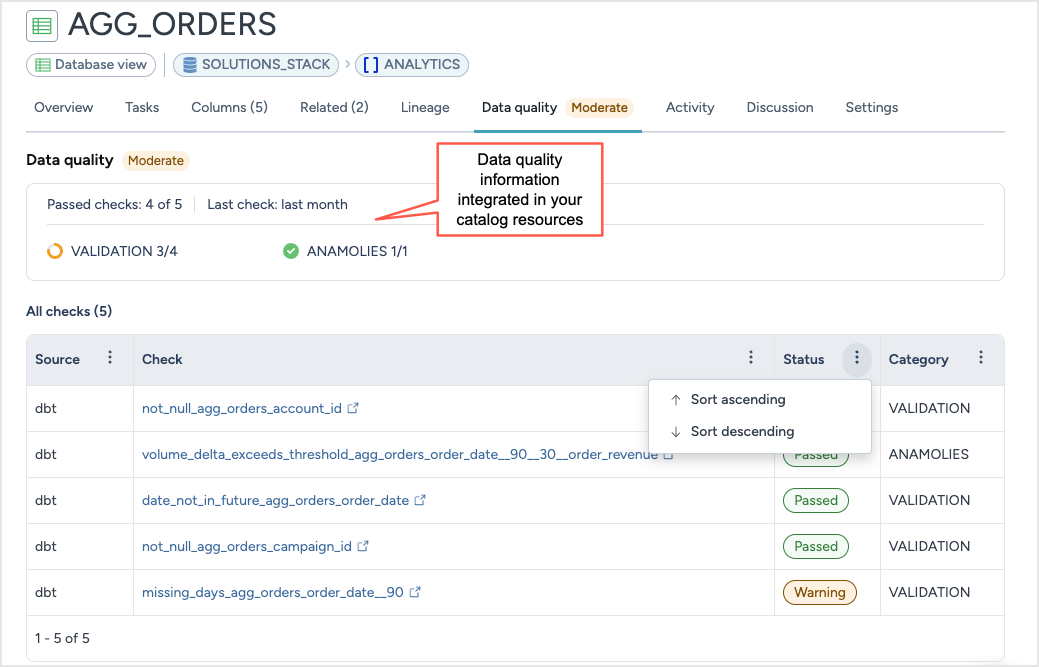Integrating with data quality tools
data.world offers open and flexible integration options that support a wide range of data quality use cases. This enables real-time data quality metadata to be captured and embedded directly into the platform—surfacing insights on quality, reliability, and performance from your own tools as well as from seamless integrations with leading data quality and observability solutions.
Important
This feature is available in Private Preview. Please contact your Customer Success Director to request access and discuss implementation.

Why integrate data quality tools?
Integrating data quality insights into your catalog centralizes and contextualizes your data health, enabling:
Discover trustworthy data: Users can see data quality status when searching for the right asset before using the data.
Clear understanding of data issues and their severity: By combining metadata with data quality insights, users gain context to understand why, how, and when rules are applied, as well as who is using the data downstream to assess severity and prioritize fixes.
Better collaboration: Data stewards, analysts, and engineers can align on data health using shared context.
Stakeholder use cases
These roles benefit from integrating data quality information into the catalog:
Role | Needs | Value |
|---|---|---|
Data product owner | View health status of catalog resources in real-time. Ensure data products are trusted and reliable, and Prioritize fixes based on business impact. | Drive aligned action. Shared visibility in the catalog helps coordinate fixes across teams. |
Data engineer | Quickly identify and troubleshoot broken or failing data | Accelerate debugging to surface data quality failures in context with schema, lineage, and ownership metadata. |
Data analyst | Quickly assess if data is trustworthy before using it | Confidently use high-quality datasets to present trusted business insights |
Data Steward | Holistic visibility into the company data health. Also, the ability to slice and dice the information to pinpoint where data quality problems are concentrated within the organization. | Helps stewards allocate attention and resources where governance maturity is low. Helps identify high-risk areas, low-performing datasets, or gaps in quality coverage. |
Supported tools and architecture
The platform is built with Open Data Quality APIs that support integration with a variety of data quality tools. The integration is powered by the data quality (DQ) API, which records Data Quality check results, assign a health badge, attaches them to specific catalog assets, and displays them in the UI.